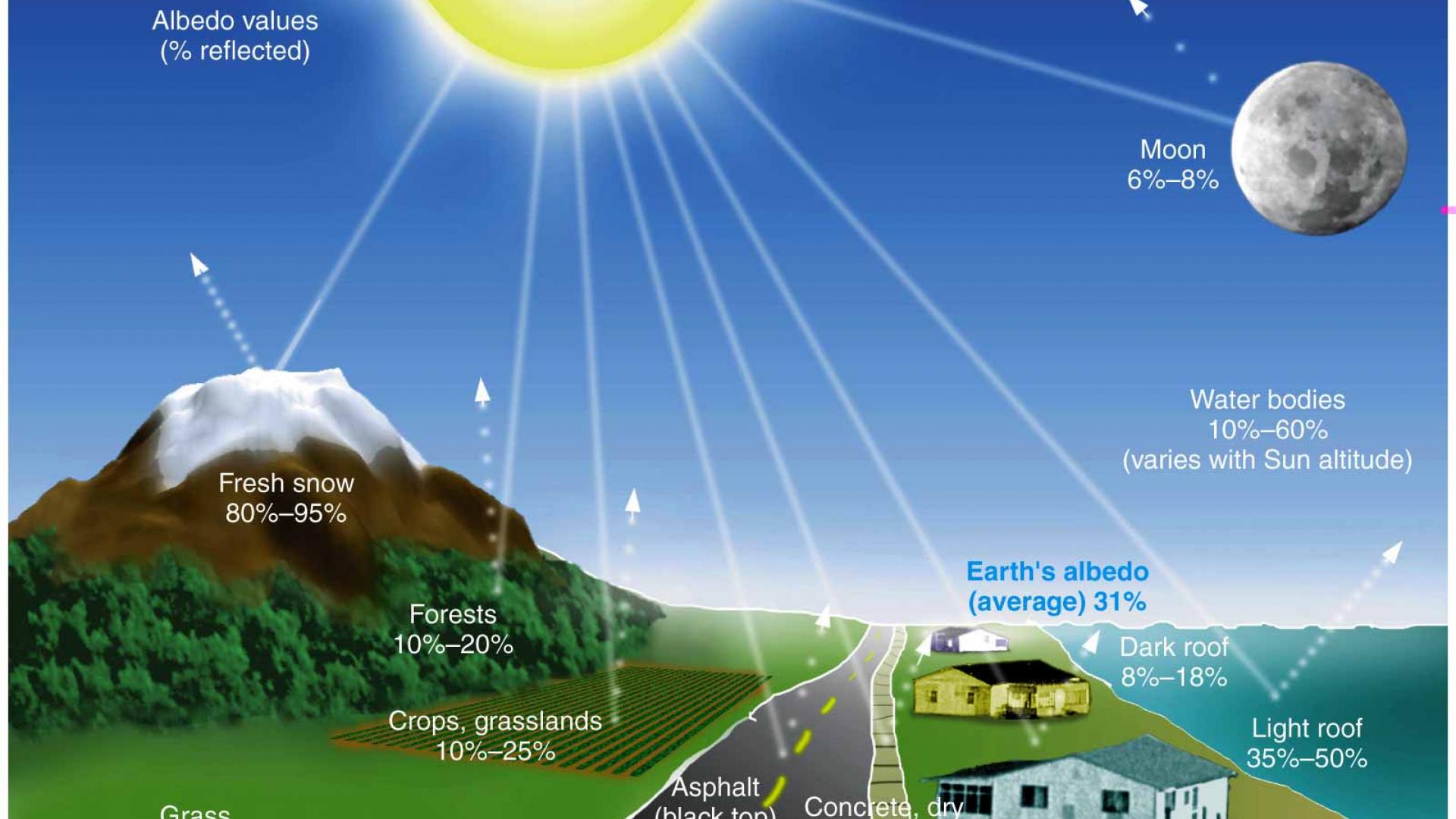-
Menu
- Log In Sign Up
- Home
- Create Ivia™
- Browse Categories
- Art
- Athletics
- Community
- Food
- Fun
- Government
- Home
- Products
- Science
- Social
- Technology
- ImproveVia
-
 ImproveVia
ImproveVia™ (beta) - Log In Sign Up

A low-cost tool to help combat global warming: get local governments, non-profits, and community organizations to incentivize homeowners, building owners, and others to paint rooftops and other surfaces white or with a highly reflective coating. The more solar radiation is reflected from the earth, the less global warming occurs.
by Cameron Tinsler on June 17th, 2014, 9:16 pm PDT. This Ivia has been viewed 14,193 times. Last improved on August 27th, 2014, 4:11 am PDT.
The amount of energy reflected by a surface is determined by the reflectivity of that surface, called the albedo. A high albedo means the surface reflects the majority of the radiation hitting it and absorbs the rest. A low albedo means a surface reflects a small amount of the incoming radiation and absorbs the rest. Fresh snow, for example, reflects up to 95% of the incoming radiation. At the other end of the spectrum, a freshly blacktopped parking lot absorbs a tremendous amount of the sun's energy--if you've ever tried to walk barefoot across blacktop on a summer day, you get the idea.
State and local governments, non-profits, community organizations and other groups should incentivize home and building owners, car owners, and transportation departments to switch from from high albedo surfaces to low ones. Encourage building owners using tar and gravel roofs to use a light-colored gravel. Encourage homeowners to paint their homes in pastels. Use light colored sand or gravel blends for median strips and playgrounds. Use whiter blends of cement and concrete for roads, sidewalks, and parking lots.
Mankind has used this effect to cool towns and neighborhoods for thousands of years. To this day buildings from South Florida to the Mediterranean use lighter colors to keep cool. In California most UPS delivery trucks and school buses have white roofs to keep out the heat.
What if most cars had white roofs? What if most houses had white roofs ( and solar panels)? What if most streets and highways increased their reflectivity by a significant amount? The aggregate impact would be substantial.
Contributions
CONTRIBUTIONS 10
PRODUCTIVE 0
HUMOROUS
Contribute to this Ivia!
Log In Sign Up
Reed W. Solomon 10 years ago
I love the image, btw.
Cameron Tinsler 10 years ago
Also, just for comfort, I would like to see parking lot blacktop replaced with a light gray top. Pitch black lots heat up fast, and can be pretty uncomfortable to walk across on warm, sunny days.
Zachary Adam Zell 10 years ago
Edited 10 years ago
Cameron Tinsler 10 years ago
http://clasfaculty.ucdenver.edu/callen/1202/Climate/RadiationBal/AlbedoValues.jpg
Christian P Hupfeld 10 years ago
Cameron Tinsler 10 years ago